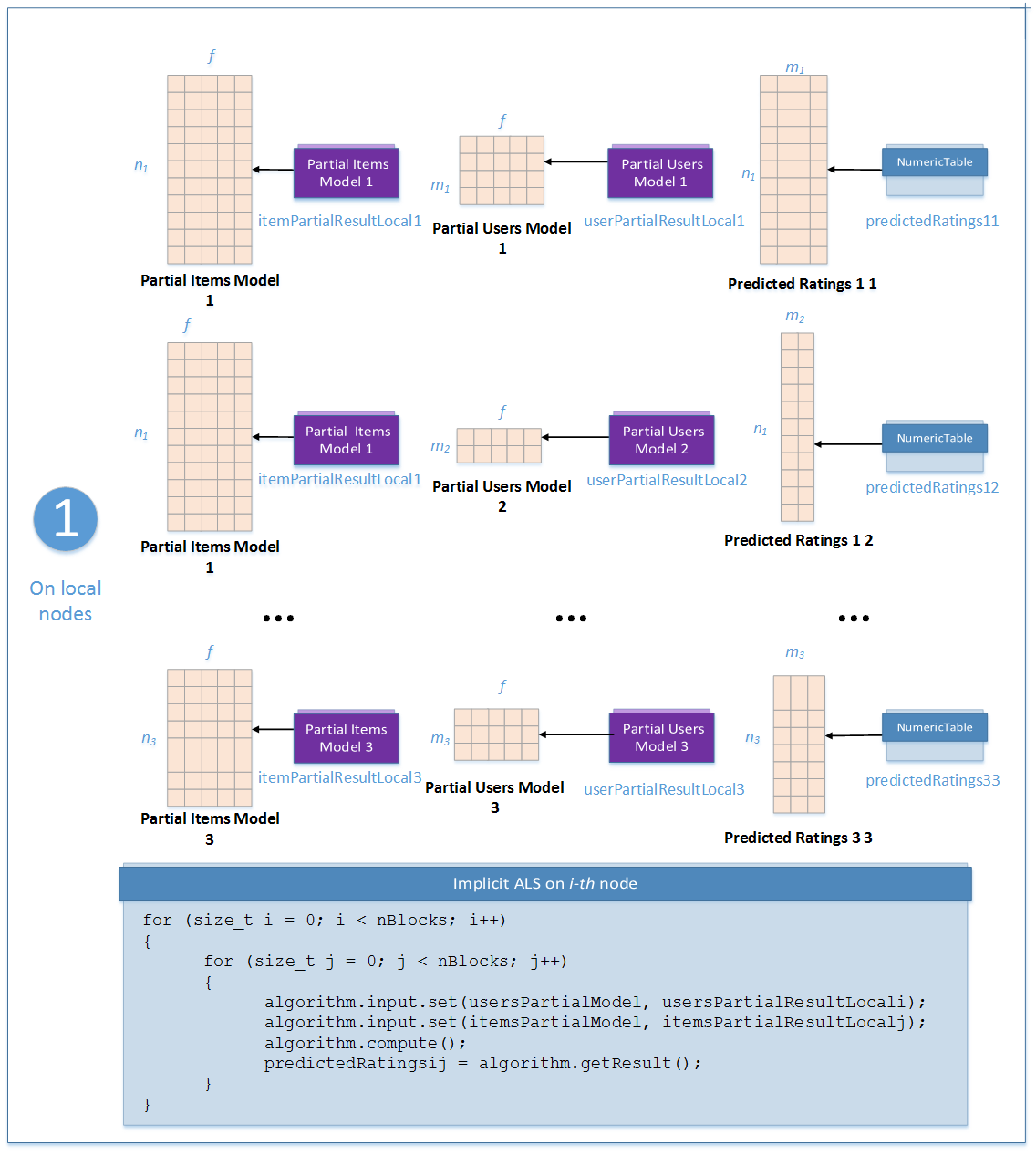Distributed Processing: Prediction of Ratings#
The distributed processing mode assumes that the data set is split in nblocks blocks across computation nodes.
Algorithm Parameters#
At the prediction stage, implicit ALS recommender in the distributed processing mode has the following parameters:
Parameter |
Default Value |
Description |
|---|---|---|
|
Not applicable |
The parameter required to initialize the algorithm. Can be:
|
|
|
The floating-point type that the algorithm uses for intermediate computations. Can be |
|
|
Performance-oriented computation method, the only method supported by the algorithm. |
|
\(10\) |
The total number of factors. |
Use the one-step computation schema for implicit ALS recommender prediction in the distributed processing mode, as explained below and illustrated by the graphic for \(\mathrm{nblocks} = 3\):
Step 1 - on Local Nodes#
Prediction of rating uses partial models, which contain the parts of user factors \(X_1, X_2, \ldots, X_{\mathrm{nblocks}}\) and item factors \(Y_1, Y_2, \ldots, Y_{\mathrm{nblocks}}\) produced at the training stage. Each pair of partial models \((X_i , Y_j)\) is used to compute a numeric table with ratings \(R_{ij}\) that correspond to the user factors and item factors from the input partial models.

Prediction with Implicit Alternating Least Squares: Distributed Processing, Step 1 - on Local Nodes#
In this step, implicit ALS recommender-based prediction accepts the input described below.
Pass the Input ID as a parameter to the methods that provide input for your algorithm.
For more details, see Algorithms.
Input ID |
Input |
|---|---|
|
The partial model trained by the implicit ALS algorithm in the distributed processing mode. Stores user factors that correspond to the \(i\)-th data block. |
|
The partial model trained by the implicit ALS algorithm in the distributed processing mode. Stores item factors that correspond to the \(j\)-th data block. |
In this step, implicit ALS recommender-based prediction calculates the result described below.
Pass the Result ID as a parameter to the methods that access the results of your algorithm.
For more details, see Algorithms.
Result ID |
Result |
|---|---|
|
Pointer to the \(m_i \times n_j\) numeric table with predicted ratings. Note By default this table is an object of the |

